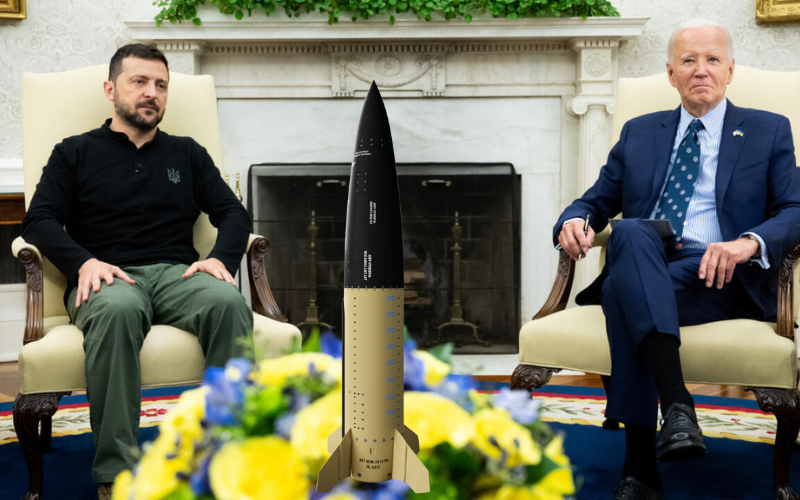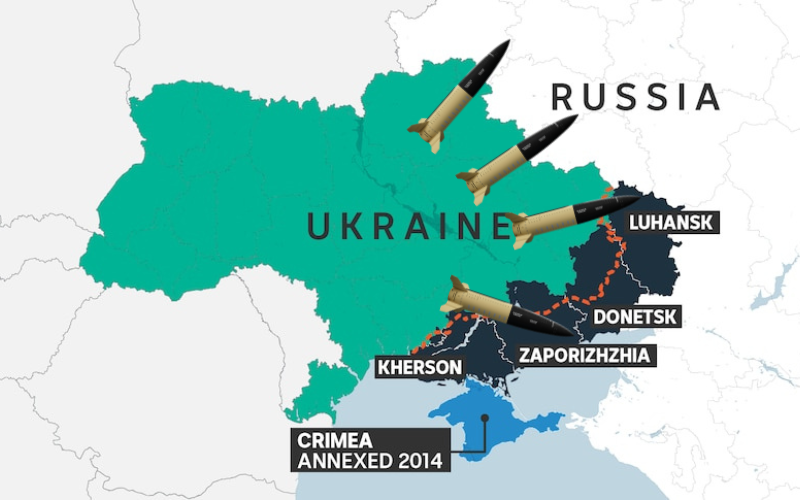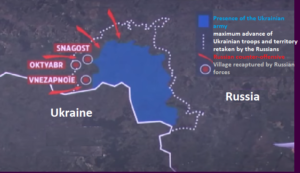ATACMS: How U.S. Long-Range Missiles Could Reshape the Russia-Ukraine War
Introduction
The ongoing conflict between Russia and Ukraine has reached a critical juncture with the United States’ decision to allow Ukraine to use long-range Army Tactical Missile Systems (ATACMS). This policy shift marks a pivotal moment in the war, intensifying both military strategies and diplomatic tensions. While hailed as a significant boost for Ukraine’s defense, the move has sparked warnings from the Kremlin, raising concerns about escalation and broader geopolitical consequences.
This article delves into the implications of this decision, examining its potential impact on the conflict and its global significance.

The United States’ Policy Shift: What Does It Mean?
President Biden’s authorization to supply Ukraine with ATACMS reflects a significant change in U.S. strategy. For months, Kyiv had lobbied for advanced weaponry capable of striking deep into Russian-held territory. Now, these precision-guided missiles, with a range of nearly 200 miles, can bolster Ukraine’s defensive and offensive operations.
Key Features of ATACMS
- Range and Speed: Capable of traveling almost 200 miles at high speeds, making interception difficult.
- Precision Targeting: Designed for critical military targets, minimizing collateral damage.
- Versatility: Suitable for various operational scenarios, including counter-offensives and strategic strikes.
Despite their advantages, the deployment of these missiles has sparked fierce debates over the potential for further escalation in the conflict.
Kremlin’s Reaction: Escalation Concerns
The Kremlin has accused the U.S. of fueling tensions and warned of dire consequences. Russian President Vladimir Putin labeled the decision a “major escalation,” emphasizing that such actions could provoke reciprocal measures.
Geopolitical Implications
- North Korean Involvement: Reports suggest North Korea has deployed 10,000 special forces to assist Russia in reclaiming lost territories, further complicating the dynamics.
- European Responses: Britain and France may follow suit by providing Ukraine with their own long-range missiles, intensifying the arms race.
This interplay of alliances underscores the growing complexity of the conflict, raising questions about its trajectory and global ramifications.
Ukraine’s Perspective: A Lifeline Amidst Adversity
For Ukraine, the provision of ATACMS is a much-needed lifeline in a conflict that has left the nation beleaguered. Ukrainian forces are currently battling to hold key regions like the Kursk area in eastern Russia, facing both Russian advances and harsh winter conditions.
Strategic Applications
- Defensive Operations: Protecting territories from Russian offensives.
- Counteroffensives: Retaking occupied regions and disrupting Russian supply lines.
- Deterrence: Demonstrating military strength to negotiate from a position of power.
Table: Military Impact of Long-Range Missiles
| Aspect | Ukraine with ATACMS | Ukraine without ATACMS |
|---|---|---|
| Defensive Capability | High | Moderate |
| Offensive Capability | Significant | Limited |
| Deterrence Potential | Enhanced | Reduced |
| Risk of Escalation | High | Moderate |
Winter Warfare: Challenges and Resilience
The timing of this policy shift coincides with an intensifying Russian campaign targeting Ukraine’s infrastructure. Missile and drone strikes have disrupted power supplies, leading to widespread blackouts.
Humanitarian Impact
- Civilian Casualties: Recent strikes in Sumy and Odessa have resulted in numerous deaths and injuries.
- Economic Strain: Power outages are crippling industries and essential services.
- Public Morale: Ukrainians are showing signs of fatigue, with some polls indicating a growing openness to negotiations.
International Dynamics: A Balancing Act
As the U.S. takes a more assertive stance, it risks alienating neutral states while strengthening alliances with Ukraine and its supporters.
Potential Allies
- United Kingdom and France: Likely to follow the U.S. lead in supplying long-range missiles.
- Eastern Europe: Continued support for Ukraine’s sovereignty and territorial integrity.
Adversaries’ Moves
- Russia’s Escalation: Increased missile attacks and potential deployment of additional troops.
- North Korea’s Role: Further involvement in supporting Russian efforts.
FAQs
Q1: What are ATACMS, and how will they impact the conflict?
ATACMS (Army Tactical Missile Systems) are long-range guided missiles designed for precision strikes. Their deployment could enhance Ukraine’s military capabilities but may escalate tensions with Russia.
Q2: Why did the U.S. change its policy now?
The decision comes as President Biden seeks to bolster Ukraine’s defenses before winter and amid reports of increased Russian aggression.
Q3: What are the risks of providing Ukraine with long-range missiles?
The primary risk is escalation, as Russia may retaliate with increased aggression or by involving additional allies like North Korea.
Q4: How might this decision affect peace negotiations?
While it strengthens Ukraine’s bargaining position, it could also delay talks by intensifying the conflict.
Q5: Are other countries likely to provide similar support?
Yes, nations like the U.K. and France may supply their own long-range missile systems, further shifting the balance of power.
Conclusion
The U.S. decision to supply Ukraine with ATACMS represents a turning point in the Russia-Ukraine war, offering both opportunities and challenges. While these missiles can enhance Ukraine’s military capabilities, they also risk escalating the conflict.
As winter looms and geopolitical stakes rise, the world watches closely to see how this development shapes the future of the conflict and global diplomacy.














Post Comment